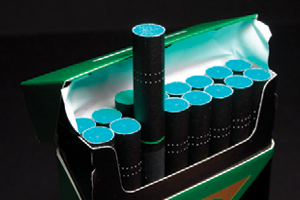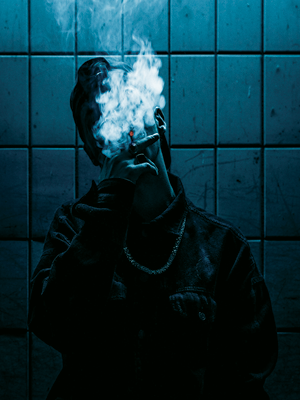The U.S. Food and Drug Administration (FDA) announced a proposed rule on April 28, 2022, that would ban the sale of menthol cigarettes and flavored cigars. Nearly two years later on April 26, 2024, the White House announced it would delay its propose menthol ban. The agency received over 175,000 comments in response to the proposal, many opposing the ban for both economic and public health reasons. While it is not expected the ban would be enacted at least until after the November election, it still looms as a possibility.
“Criminalizing a $30 billion menthol marketplace will lead to serious consequences, including an illicit market and undermining of public health and underage tobacco prevention efforts,” said Davien Anderson, a spokesperson for Altria Group Inc.
The menthol black market isn’t just a hypothetical concept: It’s a reality happening in Massachusetts and California, where menthol sales have been banned since 2020 and 2022, respectively.
“What we’ve seen generally across California is [that] an illicit marketplace of flavored e-vapor and menthol cigarette products has developed,” said Alessandra Magnasco, governmental affairs and regulatory director for California Fuels and Convenience Alliance (CFCA). “Our members are seeing it firsthand.”
But what exactly qualifies as a menthol black market? The answer is not so simple.
Dictionary.com defines “black market” as “the illicit buying and selling of goods in violation of legal price controls.” By that definition, a guy selling menthols from his trunk in a dark alley is engaging in black market activity … but technically, so is the old lady who drives across state lines to purchase her preferred brand in an area where menthol is legally sold.
“If we’re going to talk about a black market for menthols, let’s separate that from self-supply,” said John Geoghegan, a brand development consultant with over 30 years of experience in the tobacco space. “There are several levels to it, all the way up to organized racketeering.”
Criminalizing a $30 billion menthol marketplace will lead to serious consequences.”
Here’s a look at the various forms of illicit menthol sales that have emerged in Massachusetts and California, as well as the consequences the black market has had on the states’ retailers, regulators and public health.
The ‘Resistance’ Black Market
Like most tobacco regulations, the move to ban menthol began at the local level. More than 190 localities have banned menthol cigarettes to date. When menthol is banned locally, those smokers can simply drive to another city or county to purchase menthol. Geoghegan described this phenomenon as the “resistance” market. It’s not technically illegal—the possession of menthol cigarettes by consumers has not been banned, just the sale—but is illicit in the sense that it’s a workaround of the law (and excise taxes).
This resistance market is quite prominent in Massachusetts, a relatively small state (190 miles east to west and 110 miles north to south) that’s surrounded by states where menthol has not been banned.
“You can see the pack sales come out of Massachusetts and start getting sold in New Hampshire or Rhode Island or other border states,” said Peter Brennan, executive director of New England Convenience Store and Energy Marketers (NECSEMA).
NECSEMA reports that in the 12 months following the 2020 ban, menthol sales grew by 78% in New Hampshire, 42.5% in Rhode Island, 10.5% in Vermont and 4.1% in Connecticut. New Hampshire stores bordering Massachusetts saw their menthol sales grow by over 100%.
“Aunt Martha can get in her car in Massachussetts and drive 20 miles down to Windsor, Connecticut, and buy three cartons of menthols without raising an eyebrow,” Geoghegan said. “It’s not illegal because there’s no resale or tax stamp violation.”
In Massachusetts, “the only real loser is the retailer,” said Matt Domingo, senior director of external relations at Reynolds American Inc. “Adult consumers have simply mobilized to neighboring states to find their desired products.”
Driving across state lines to purchase menthol cigarettes may not be illegal—but the tax disparities, as well as the number of menthol smokers in the state, has incentivized a resale market that is quite illegal, if not yet the most prevalent way Massachusetts smokers obtain menthol.
“Massachusetts already had somewhat of a black-market problem due to high tax rates—the flavor ban exacerbated that,” Brennan said. “The data on illegal product seizures shows that flavored tobacco products are being imported into Massachusetts regularly, via vehicles traveling to New Hampshire to get cartons of menthol cigarettes or people ordering pallets of illegal vapes from China. The black market is thriving.”

A More Dangerous Black Market
California provides a stark comparison with a more concerning threat. Unlike Massachusetts, California is 250 miles wide and 760 miles long with one side of the state completely bordered by water. While some cross-state menthol purchases are made, it’s much more difficult to do.
Which has opened the door to something more nefarious.
“Cross-border smuggling, theft and loosie sales, those are all part of California’s black market—but I think you have this other aspect that exists too,” said Anna Ready Blom, NACS director of government relations, noting reports that Mexican drug cartels are capable of producing and smuggling menthol cigarettes into the States. “It’s scary stuff.”
These concerns were echoed in a letter sent by the House Committee on Homeland Security Chairman Mark E. Green (R-TN) to Department of Homeland Security (DHS) Secretary Alejandro Mayorkas regarding FDA’s proposed menthol ban.
“CJNG and other Mexican cartels will have significant financial incentive to utilize their existing fentanyl and narcotics networks to push tobacco sales in the United States,” Green wrote.
Data indicates this is already happening.
In a study commissioned by Altria, the research firm WSPM Group analyzed 15,000 cigarette packs from trash cans throughout California. Analysis of the packs found:
- 21.1% of cigarette packs were menthol or a “menthol work-around.”
- Only 41.2% of the packs found had a clear California tax stamp (indicating the majority of packs were from other states or smuggled in illegally).
- 27.6% were “non-domestic products” meaning they were either sold at duty-free stores or were not produced in the United States at all.
- 5.1% of the packs found were Sheriff brand, one of the duty-free brands known to be trafficked by the cartels.
“It’s a duty-free product, so it is meant to go out of the United States,” Blom said about Sheriff. “Yet it’s making its way back in—meaning illicit, cross-border trafficking of these products already exists today.”
The incentive is huge: Geoghegan cited the CDC’s estimate that there are 740,000 menthol smokers in California.
“With 740,000 menthol smokers in California, there’s probably $192 million on the table for interstate racketeering,” he said.
Real world experience shows that a menthol prohibition doesn’t lead to quitting.”
Black Market Consequences
Whether it’s a resistance market, a cartel-fueled market or something in between, menthol bans have had fairly serious consequences—with little reward to show for it.
“Real world experience shows that a menthol prohibition doesn’t lead to quitting,” Domingo said. “Smokers simply switch or turn to the illicit market.”
The pack study suggested nearly the same rate of menthol consumption in California post-ban (21.1%) as before the ban (24%); and research published in JAMA Internal Medicine showed that in the year after the menthol ban, smoking rates of black women actually increased.
Meanwhile, retailers in prohibition states have felt the sting.
“In the year following the ban, Massachusetts lost over 33 million packs of cigarettes,” Brennan said. “Depending on the store location, tobacco can make up 20% to 30% of in-store revenue at Massachusetts stores.”
“It creates an economic disadvantage for those retailers where products are banned because not only are they losing the tobacco sale, they’re losing the sale of the entire basket,” Blom added.
“It’s not great,” Brennan surmised.
It’s not just retailers feeling the economic consequences: States that have banned menthol are facing consequences too. In the first year of the menthol ban, Brennan said Massachusetts lost roughly $127 million in tax revenue that went to neighboring states, and that tax revenue loss has continued unabated. With the Altria study showing only 45% of packs bore a California tax stamp, it’s likely that state has lost even more money than Massachusetts.
And that’s not the only cost.

“There are also significant enforcement costs,” Brennan said. “Police, boards of health, people to confiscate illegal products, storage space for seized contraband, etc. In Massachusetts, the Department of Revenue is overwhelmed by this issue. States now have to dedicate enormous resources to this problem.”
Ironically, the biggest cost might be that of public health. Menthol bans often tout the goal of reducing harm and reducing youth smoking rates. But a robust black market does exactly the opposite.
Convenience retailers have invested millions of dollars in age verification training and practices. “That is completely eroded by a black market,” Blom said. “Illicit purveyors certainly aren’t checking age—they want to sell as many products as possible to whomever.”
Unlike FDA approved and controlled products sold legally in convenience stores, the non-domestic or cartel-produced cigarettes being sold on the black market have zero oversight.
The Bureau of Alcohol, Tobacco, Firearms and Explosives (ATF) has addressed this, stating, “counterfeit cigarettes often contain higher levels of tar, nicotine and carbon monoxide than genuine cigarettes, and may contain contaminants such as sand and packaging materials. Counterfeit cigarettes pose a greater health risk to consumers and cost taxpayers millions in lost revenue.”
“Products sold legally in the United States today have undergone FDA’s intense scrutiny,” Blom said. “Counterfeit products, often coming from outside of the United States, lack that scrutiny and are a greater danger.”
Prohibition policies do not work.”
A Federal Ban
If the FDA goes through with a national menthol ban, that illicit market and all its negative consequences would shift entirely to the worst of the two options: a black market run by bad actors.
Retailers and manufacturers have been urging the administration to look at the evidence from Massachusetts and California.
“A ban on menthol flies in the face of proven science and is contrary to the FDA’s stated goal of reducing the health effects of tobacco use,” said Domingo of Reynolds. “[It] would fuel an extensive illicit market for unregulated and potentially more dangerous products and related crime.”
“Prohibition policies do not work,” said Magnasco of CFCA, adding that a federal menthol ban would result in a true national black market like what’s happened in her state of California. “This type of illicit market will lead to significant unintended consequences for retailers across the country, including having to compete against illicit cigarette traffickers who will supply illegal menthol products and don’t check IDs. The California experience provides further evidence that keeping these types of products legal and regulated is the best path forward.”